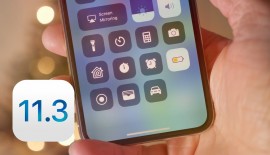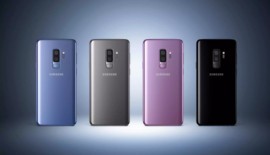iPhone 7 models w/Qualcomm modem has an improved cellular performance as opposed to Intel
- Fariha Khan
- October 21, 2016
- 1,445
We got to know from the report that iPhone 7’s featuring Qualcomm’s MDM9645M modem has better cellular performance compared to the Intel version. The Qualcomm version’s capability to benefiting from Ultra HD Voice has also been disabled as per the findings of the report.
Ultra HD Voice
The first thought-provoking things that we learn from the report is that Qualcomm’s MDM9645M modem is capable of Ultra HD Voice (the marketing title for the Enhanced Voice Services codec, or EVS). EVS can result in expressively improved quality of audio over cellular connections. However, as per the report, Apple planned to do away with this feature. It’s a decision that might be an attempt to level the live field with the Intel-powered version of the iPhone 7.
At the moment, just T-Mobile has installed EVS on its network, so coverage is restricted in the United States. According to T-Mobile, EVS brings a number of advantages to its customers such as better voice call reliability in areas of weaker signal and higher-fidelity calls than the HD Voice.
It’s strange as T-Mobile users are being supplied with the iPhone 7 (Intel version) that does not have the power to support this feature from a hardware point of view. It’s worth noting that at least 2 other T-Mobile-compatible phones, which includes the LG G5 and the Samsung Galaxy S7, back EVS.
That is nothing important if you are not using T-Mobile considering no other carriers seem to support Ultra HD Voice for now. But thing may change in the future. As the AT&T and T-Mobile versions are not capable of backing the feature from a hardware perspective, we may not see support for EVS until future iPhone models are launched.
But the EVS/Ultra HD Voice particulars are not the sole exciting data information that we get from the report. It has RF tests that pit the Qualcomm version of the iPhone 7 Plus vs the Intel version.
Cellular performance
The report measures the LTE throughput for both devices to compare data between the Intel-powered and Qualcomm-powered iPhone 7 Plus versions. Both models got maximum sustained data throughput while at cell center. But they responded differently when power levels to simulate edge of cell scenarios were decreased. Two additional LTE bands were tested as well. These included Band 4 (20MHz), and Band 7 (20MHz) in 4×2 MIMO. The results were the same.
Conclusion
We can conclude that the iPhone 7 hardware featuring the Qualcomm-powered modem has a noteworthy cellular modem performance advantage over the Intel model. Why Apple has sourced 2 baseband suppliers after using Qualcomm hardware for years, we can say it is for widening its supply chain. It seems supply chain expansion has resulted in a quantifiable performance difference between the 2 versions in a lab-controlled setting.
It is also worth noting that the iPhone 7 having the Qualcomm modem is being sold in China, Japan and in the US only. It implies that Apple believed the Intel version to be good enough for every other region.
If you are to get an iPhone 7 for full price in one of the above-mentioned areas, we advise that you opt for the Verizon/Sprint/SIM-free version. It not only performs better from a cellular modem side, but has the ability to work with most carriers in the United States and out of the country as well.






